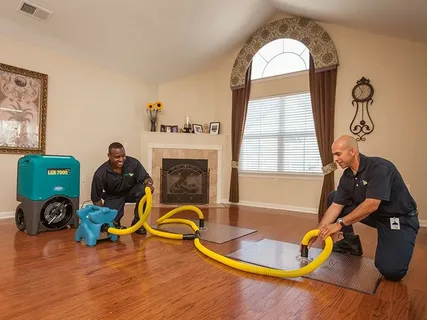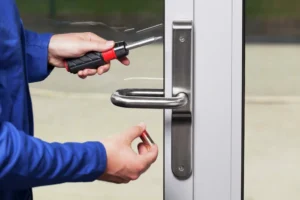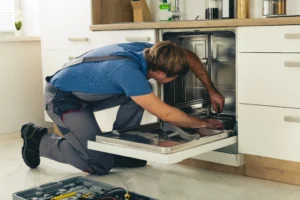
restoration experts
Flooding is one of the most devastating events that can happen to a property. When water invades a building, it can cause extensive damage to walls, floors, and even the structural foundation. Homeowners in Vancouver, WA, know how critical it is to act quickly when flood damage occurs. Restoring a property after a flood requires expertise, precision, and the right tools. In this post, we’ll explore how restoration experts handle flood damage and why professional intervention is crucial.
Flood damage can be overwhelming, but learning how professionals deal with this type of damage can help you understand the process better. For instance, you can learn more about how an experienced contractor can help you restore your home and protect it from future water damage.
Initial Assessment and Safety Precautions
The first step in dealing with flood damage is a thorough assessment. Restoration experts, like those from Prestige NW Restoration, understand that no two floods are alike. The type and extent of the damage depend on several factors, such as the severity of the flood, how long the water has been in the building, and the materials affected.
During the initial assessment, restoration teams evaluate:
- The depth of the water
- The materials that have been exposed to moisture
- Any visible signs of structural damage
- Potential safety hazards like electrical issues or contamination
Safety is a top priority. Floodwaters often carry contaminants like sewage, chemicals, and bacteria, so experts will wear protective gear and ensure the area is safe before beginning restoration. In many cases, power is turned off to prevent electrical shocks, especially if the water has reached electrical outlets or appliances.
Water Extraction and Drying
After the initial assessment, the next critical step is water extraction. Restoration professionals use industrial-grade equipment to remove large amounts of standing water from the property. Specialized pumps and vacuums are utilized to remove water quickly, minimizing further damage.
Once the standing water is removed, the drying process begins. It’s not enough to simply dry the surface. Water can seep into walls, floors, and substructures, so professionals use dehumidifiers and air movers to pull moisture out of hidden areas. This step is essential to prevent mold growth, which can begin within 24 to 48 hours after water exposure.
Cleaning and Disinfection
Floodwater often contains harmful contaminants. Therefore, once the water is removed and the area is dried, thorough cleaning and disinfection are necessary. Experts use specialized cleaning products to disinfect the affected areas and eliminate any health risks.
Walls, flooring, furniture, and other porous materials that have absorbed water may be subject to additional cleaning or, in severe cases, complete removal. Restoration professionals determine which items can be saved and which are too damaged to restore. Proper disinfection is essential to ensure the area is safe for occupants, particularly in cases where bacteria or sewage were present.
Mold Prevention and Remediation
Mold is a major concern after a flood, as it thrives in damp environments. Restoration experts take active steps to prevent mold growth during the drying and cleaning stages. However, even with the best efforts, mold can sometimes develop, particularly in hidden areas like behind walls or under flooring.
In cases where mold is present, mold remediation becomes a necessary part of the restoration process. Restoration professionals will:
- Contain the affected area to prevent mold spores from spreading.
- Remove contaminated materials that cannot be cleaned.
- Use air scrubbers and HEPA filters to remove mold spores from the air.
- Apply antimicrobial treatments to prevent further growth.
It’s crucial to address mold as quickly as possible, as it can pose significant health risks, especially for individuals with respiratory conditions or weakened immune systems.
Structural Repairs and Restoration
Once the water is removed, and the area is cleaned and disinfected, the final step is repairing any structural damage. Flooding can weaken a building’s foundation, damage walls, flooring, and ceilings, and ruin fixtures such as cabinetry or baseboards. Restoration experts assess the structural integrity of the property and carry out any necessary repairs.
Depending on the extent of the flood damage, repairs may include:
- Replacing damaged drywall, insulation, and flooring.
- Restoring electrical systems, if water has affected wiring or outlets.
- Rebuilding or reinforcing structural elements like support beams.
- Repainting walls and replacing trim or fixtures.
Professional restoration ensures that the property is restored to its pre-flood condition, and any underlying damage is properly addressed. Quick and efficient repairs help prevent further issues like mold growth or foundation instability.
The Importance of Professional Restoration Services
Handling flood damage requires specialized knowledge, equipment, and experience. Professional restoration companies have the training and expertise to assess the damage accurately, remove water efficiently, and ensure the property is thoroughly cleaned, dried, and repaired.
Attempting to handle flood damage on your own can lead to incomplete repairs, missed water damage in hidden areas, or improper disinfection, which can cause health problems. Moreover, DIY flood restoration often falls short when it comes to dealing with mold or structural damage.
By hiring a professional team, you can ensure that every aspect of the flood damage is handled thoroughly and correctly, giving you peace of mind that your home or business is safe and sound.
FAQs About Flood Damage Restoration
1. How long does the flood restoration process take?
The timeline for flood restoration depends on the extent of the damage and the size of the property. In general, water extraction and drying take 3 to 7 days, but repairs and restoration can take several weeks, depending on the severity of the damage.
2. Can I stay in my home during the restoration process?
In many cases, it may be necessary to leave your home temporarily, especially if the damage is extensive or if mold or contaminants are present. Your restoration team will advise you on whether it’s safe to stay or if you need to relocate during the process.
3. What should I do immediately after a flood?
After a flood, the first step is to ensure your safety. Turn off the electricity, avoid standing water, and contact a professional restoration service immediately. The sooner the water is removed, the less likely you are to experience long-term damage.
4. Can all items be saved after flood damage?
Some items, especially non-porous materials, can often be saved with proper cleaning and drying. However, porous materials like carpeting, upholstered furniture, and drywall may need to be replaced if they’ve absorbed too much water or contamination.
5. Will my insurance cover flood restoration?
Flood insurance coverage varies depending on your policy. It’s important to check with your insurance provider to understand your coverage and what expenses are included in flood restoration.
Conclusion: Trust the Experts for Flood Damage Restoration
Flood damage can be overwhelming, but with the right restoration team, your property can be restored to its former condition. Prestige NW Restoration specializes in flood damage restoration in Vancouver, WA, providing professional services to help you recover from water-related disasters. If you’re facing flood damage, don’t wait—give them a call today at (360) 334-3624 to get the expert help you need. Serving Portland, Camas, and surrounding areas, they are ready to assist with all your restoration needs.





